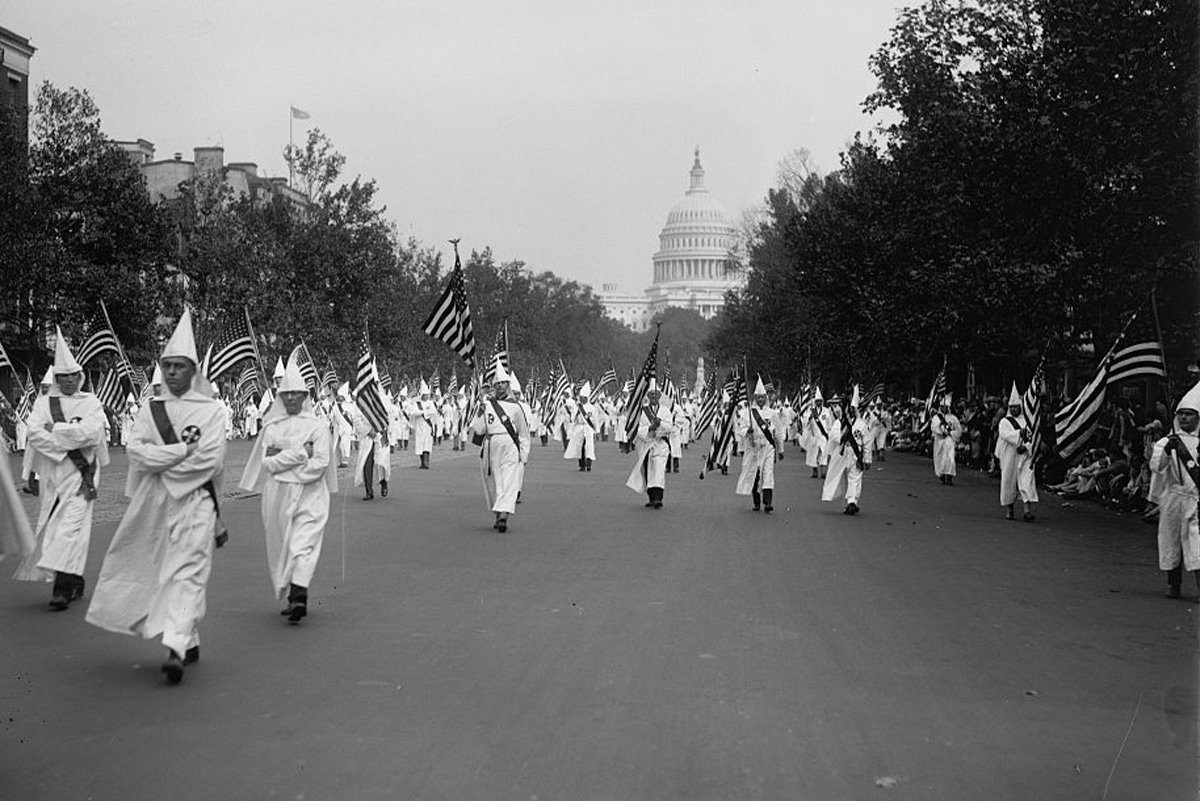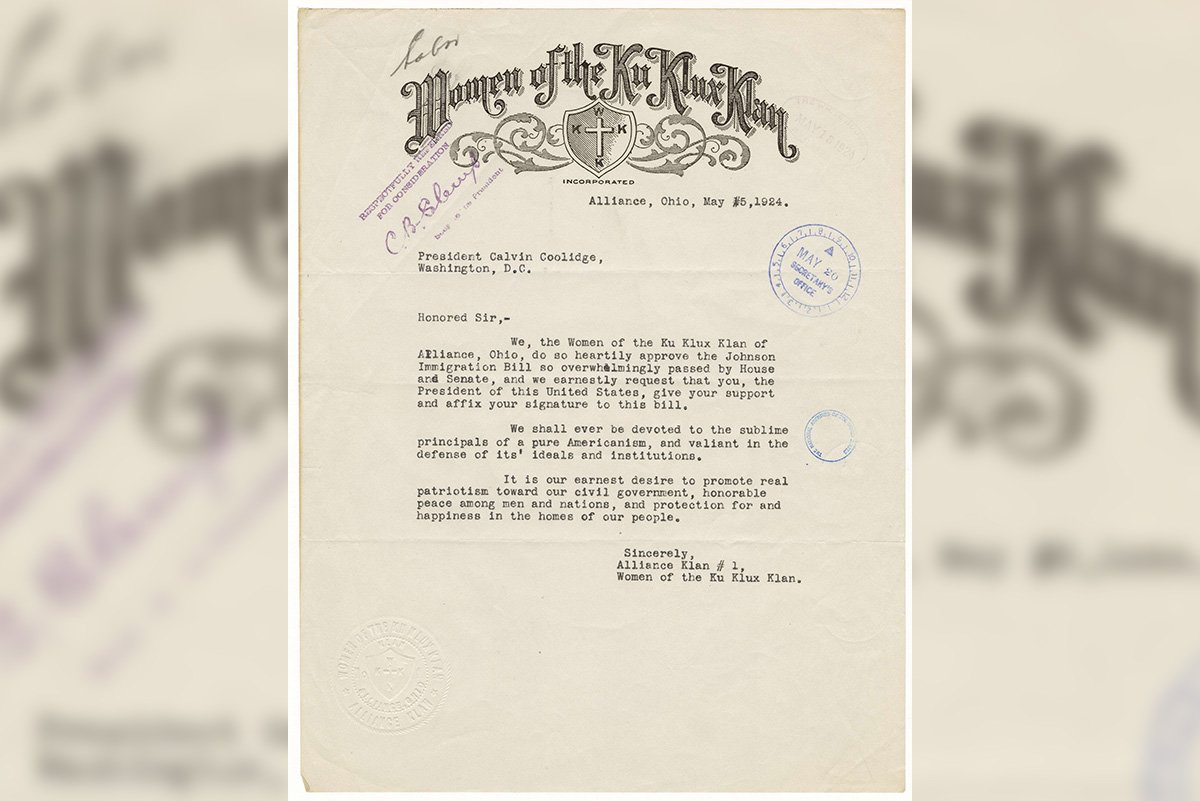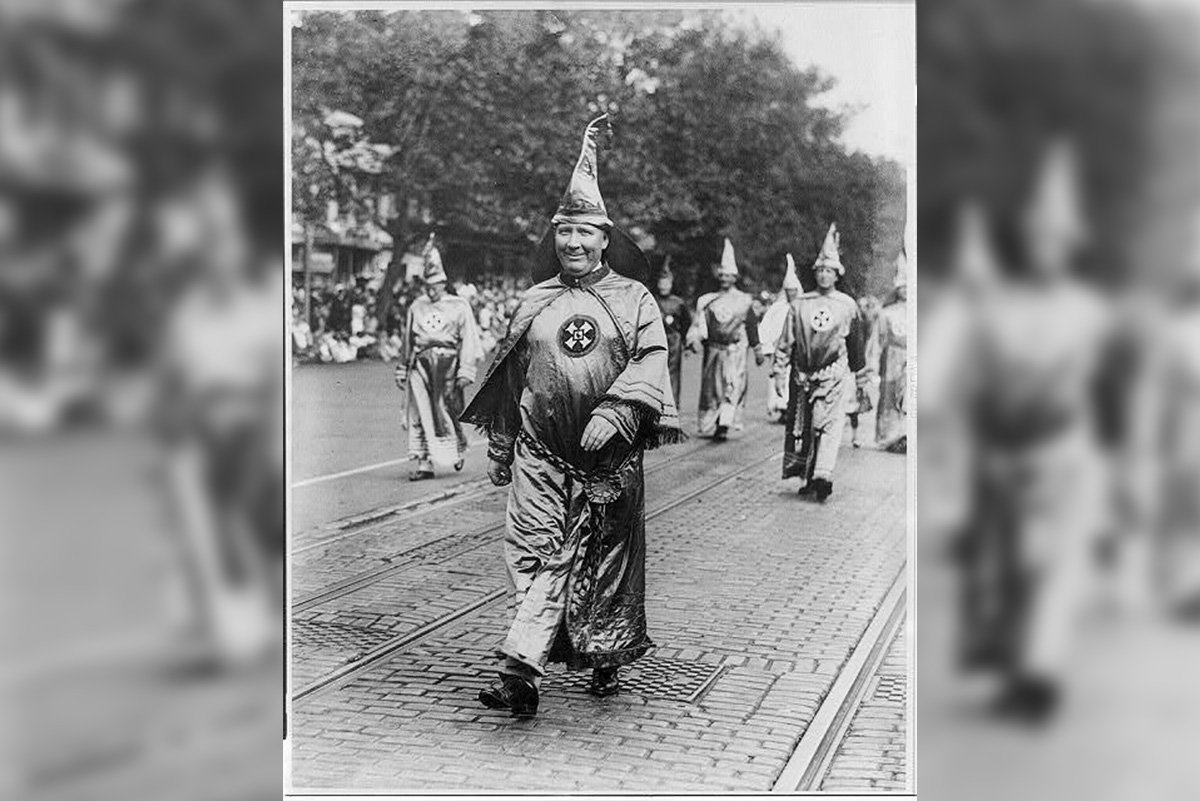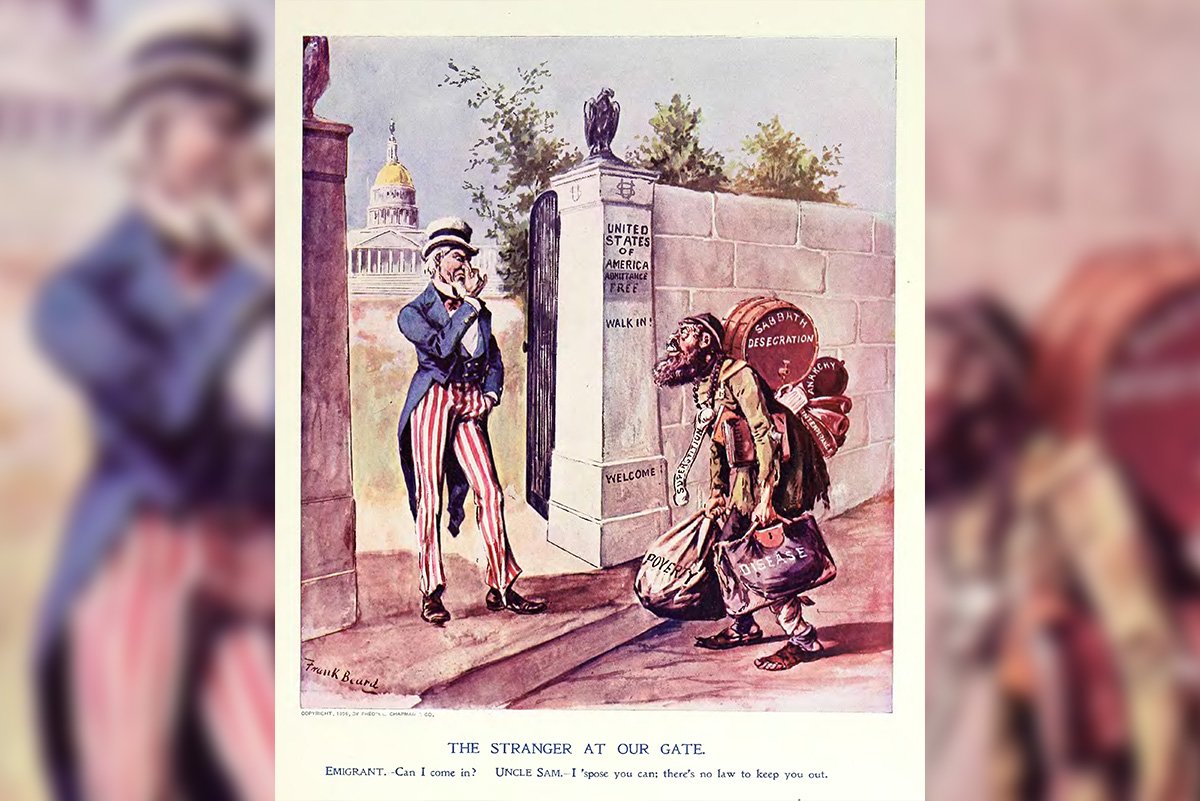
On Aug. 8, 1925, up to 50,000 Ku Klux Klan members marched in Washington, with as many as 150,000 spectators watching. Photo courtesy of the Library of Congress.
On Aug. 8, 1925, droves of white supremacists filled the streets of Pennsylvania Avenue. Marching past monuments dedicated to the American ideals of justice, liberty, and equality, members of the Ku Klux Klan advocated for a “white Americans first” policy. Authorities initially underestimated how many members would turn out, expecting possibly 5,000. Ultimately, as many as 50,000 Klansmen showed up, boldly showing their faces as 150,000 spectators watched the sea of white parade through Washington.
Romantics often sketch post-World War I America as the Jazz Age, filled with the Louis Armstrongs and Josephine Bakers of the time, but lurking in the darker corners of the historical record is a more uncomfortable truth. The Roaring ’20s were filled with chaotic and disorganized labor movements, the First Red Scare, and growing prejudice toward Asian and non-Protestant European immigrants.
A year before the KKK descended upon DC, the hate group petitioned government officials to pass the Immigration Act of 1924, also called the Johnson-Reed Act, named for its congressional champions, Sen. David Reed and US Rep. Albert Johnson.

Reed, who once said, “if this country ever needed a Mussolini, it needs one now,” and Johnson, a eugenics advocate, believed that newly arrived immigrants were sick and starving, incapable of contributing to American society. It was a sentiment many in the KKK shared.
This iteration of the KKK — the second of three — was more actively engaged in social issues than its alternate versions. Still, it remained anchored to its founding principles of bigotry and white-Protestant ethnocentrism.
The first iteration of the KKK, often seen as the quintessence of the organization, was brutal and violent, sparking an 1871 congressional inquiry that labeled it a “paramilitary white supremacist organization.” The second iteration lasted 29 years, from 1915 to 1944, and focused on the fraternal aspects of the organization.

The Klan’s third iteration surged in the 1960s during the civil rights movement.
But it was the second iteration’s brazen attempt to rebrand itself that led to members marching on the capital without their hoods pulled over their faces in 1925.
“Apart from its darker activities, which brought so much emotional anguish and even physical suffering to its victims, [the second Klan iteration] is remembered primarily for its sinister costumes, its mysterious rituals and late night ceremonies, its bizarre titles for its officers, and especially for its symbol, the fiery cross,” according to the Coolidge Foundation.
According to a 2016 article in The Atlantic by historian Joshua Rothman, Methodist preacher and aspiring doctor William Simmons announced the new Knights of the Ku Klux Klan in 1915. He called it “The World’s Greatest Secret, Social, Patriotic, Fraternal, Beneficiary Order” and a “High Class Order for Men of Intelligence and Character.”

Harvard University’s Pluralism Project directly attributes Ellis Island’s closure to the rise of supremacist groups in America in the post-World War I era. Several historians mark this period as the peak of KKK membership across the country — due in part to an aggressive marketing campaign — with its rosters ranging from 2 million to 5 million men by 1925. The Coolidge Foundation explained the rise in participation, stating, “They made a point of pandering to local concerns, fears, and prejudices.”
This second Klan’s new marketing campaign found particularly fertile ground for recruitment in the Midwest, with more than 40% of members located in just three states: Ohio, Indiana, and Illinois, as reported by the Bill of Rights Institute.
The KKK and its national membership peaked during the time of the Johnson-Reed Act, already the third in a series of measures meant to restrict immigration from so-called “barred zones,” or areas of “unwanted” ethnicities. These “undesirables” included Japanese, Chinese, Indians, Middle Eastern, and other Asian races. The sentiments grew to include religious groups such as Jews and Catholics.

“The Immigration Act of 1924 limited the number of immigrants allowed entry into the United States through a national origins quota,” the US Office of the Historian wrote. “The quota provided immigration visas to two percent of the total number of people of each nationality in the United States as of the 1890 national census. It completely excluded immigrants from Asia.”
Between 1880 and 1924, the Jewish population in the United States grew from 250,000 to almost 4 million. The KKK, a primarily Protestant group, perceived Catholics as a similarly growing threat and believed they would be more loyal to the Pope in Rome than to their newly adopted America.
“[Henry] Ford’s newspaper, The Dearborn Independent, regularly promulgated images of Jews that were in line with KKK propaganda, and drew from The Protocols of the Elders of Zion, a book put out by the Russian secret police claiming that Jews were agents of the Devil seeking to overthrow Western civilization,” The Pluralism Project explained. Ford also excluded Jews from the Dearborn suburb built for his factory workers.
By 1930, the Klan “claimed 11 governors, 16 senators, and as many as 75 congressmen — roughly split between Republicans and Democrats,” The Washington Post reported in 2018. The Klan used political influence and its hold on a frightened American public to pass the most bigoted immigration law in American history. Congress would not revise the bill until 1952.
Read Next:

Lauren Coontz is a former staff writer for Coffee or Die Magazine. Beaches are preferred, but Lauren calls the Rocky Mountains of Utah home. You can usually find her in an art museum, at an archaeology site, or checking out local nightlife like drag shows and cocktail bars (gin is key). A student of history, Lauren is an Army veteran who worked all over the world and loves to travel to see the old stuff the history books only give a sentence to. She likes medium roast coffee and sometimes, like a sinner, adds sweet cream to it.
BRCC and Bad Moon Print Press team up for an exclusive, limited-edition T-shirt design!
BRCC partners with Team Room Design for an exclusive T-shirt release!
Thirty Seconds Out has partnered with BRCC for an exclusive shirt design invoking the God of Winter.
Lucas O'Hara of Grizzly Forge has teamed up with BRCC for a badass, exclusive Shirt Club T-shirt design featuring his most popular knife and tiomahawk.
Coffee or Die sits down with one of the graphic designers behind Black Rifle Coffee's signature look and vibe.
Biden will award the Medal of Honor to a Vietnam War Army helicopter pilot who risked his life to save a reconnaissance team from almost certain death.
Ever wonder how much Jack Mandaville would f*ck sh*t up if he went back in time? The American Revolution didn't even see him coming.
A nearly 200-year-old West Point time capsule that at first appeared to yield little more than dust contains hidden treasure, the US Military Academy said.












